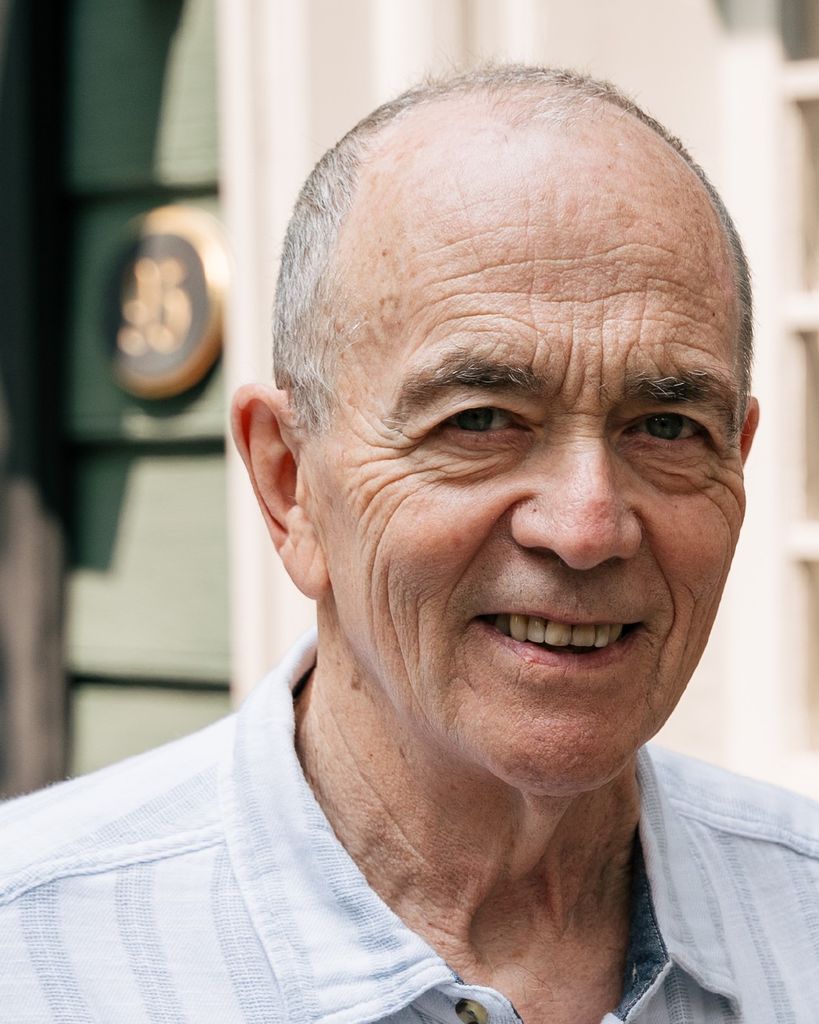

Daniel George
July 5, 1943 — January 4, 2025
Daniel C. George
July 5, 1943 – January 4, 2025
Daniel Charles George (Dan) was raised in the Adirondack village of Lake George, New York by his Irish-born mother Nora Walsh George. He was pre-deceased by his sister Sheila George Blais. Their father Bernard worked as a builder and handy man, coming from a long line of carpenters. Several generations of homes built by the family remain in the Lake George area.
Dan excelled in sports, serving as captain of his high school basketball team and baseball team catcher. He was in the high school band (tuba), editor of the yearbook, and voted “Best Personality” and “Most Popular” by classmates. Summers he worked numerous jobs, including posing as a bank robber for a local amusement park, teaching tourists to ride at a dude ranch, and later rodeo – bull-dogging along with roping.
Dan graduated with a Bachelor of Arts in Political Theory from SUNY Albany’s Rockefeller College. He had a seminal epiphany about becoming an artist during a summer abroad living in Mexico. Studying aesthetics, he realized that he wanted to create, rather than only study, art.
This led to a year abroad with his family (then-wife Linda, and young daughter Shannon) where he studied at the Royal Academy of Fine Arts in Antwerp Belgium. This was followed by many years of practice at the Art Students League of New York (as Henry Schnakenberg Merit Scholar) where he further honed his eye and hand. His preferred medium was metal sculpture crafted in response to public projects (see artist’s biography below).
Dan was an avid consumer of news with an insatiable interest in politics. He was a true intellectual, a passionate reader, and scholar of Irish history, mythology, culture, and literature. He was known for his dry humor, often dropping information “bombshells” out of the blue. He was deeply generous to friends, acquaintances, and philanthropically. He and his wife Erica Marks became citizens of Ireland and he visited scores of times, connecting with his mother’s family and cultivating dear friendships. Dan mentored numerous younger artists; his unique perspective on their work transformed each individual.
He was filled with love and admiration for his daughter Shannon Lee George Mawson (Nathan), his granddaughter Maya Lee Kardas (Pedro), and beloved nephews Daniel and Elias Marks Aarset. His sister-in-law Jessica Marks and brother-in-law Bernt Aarset, and Mimi Hart, two beloved nieces Jacalyn and Jeni, and nephew Jeff and their spouses and children, were never far from his thoughts and held deeply in his heart, in addition to many cherished friends.
Dan and Erica were blessed to share nearly 28 years of a joyful, love- and adventure-filled marriage. Their first date was January 6, 1996.
Dan died on January 4, 2025, from neuroendocrine cancer. We are grateful to the Memorial Sloan Kettering care team, and many physicians and surgeons who saw him through numerous surgeries throughout his life. Hospice of the Hudson Valley has been a special gift during the last month of his illness, as was his palliative care physician Dr. Maggie Carpenter. His family is filled with gratitude at the outpouring of love and support. He will be profoundly missed.
Donations in memory of Dan may be made to Sculpture Space in Utica, NY; the Lake George Battlefield Park Alliance; Hudson Valley Hospice; Go Doc Go; ACT; and SUNY New Paltz.
Dan George, Artist
Statement by Susan Cooke, curator and friend
“I was trained as a painter and became a sculptor,” Dan George stated a few years ago in an online “Artist’s Statement: Column for Publication.” His studies of drawing and painting at the Art Students League, New York, and the Royal Academy of Fine Arts, Antwerp (1968–1973) taught him to deploy line, color, and light to convey spatial fluidity and the expressive dynamism of abstract and human bodies in motion, lessons that would leave a lasting imprint on his sculptural practice as it evolved over five decades.
The red-edged, blue-painted bolted steel plates of The Falls, 1977 (The Hyde Collection, Glens Falls), recently restored and reinstalled on the museum’s grounds, appear to cascade and tumble, like the cataracts that provided electricity and powered Glens Falls’ industrial growth in the 19th-century. George also noted that the stacked verticality of the sculpture reflected his fascination with totem pole carvings made for the tourist trade by descendants of the indigenous Mohawk populations. Aontas, (formerly Changes) 1976 (Collection Geraldine Hughes and Conor Allen)–expands laterally into the landscape, rather than vertically: the widespread stance of its two red-painted steel legs and slender arms conjures a body at odds with itself, held together only by a fragile plate of semi-transparent glass seemingly suspended in midair. The work acquired its current title Aontas (“Union,” in Irish) in 2020, as a tribute, George noted, to a symbolic, if not yet literal unification of Northern Ireland and Ireland achieved by his friends’ marriage.
Einstein from Las Vegas, 1979, George’s first multi-part, temporary, sculpture installation announced a decisive reorientation of his artistic ambitions. Rather than conceive sculptures as singular, stationary, and self-contained physical units, he sought to make the artwork’s viewers—as they move at varying speeds on foot or in cars along a trajectory defined by 25 geometric forms cut from aluminum plates covered with layers of colored vinyl illuminated by shifting effects of ambient and artificial light and installed along a curving, quarter mile stretch of highway on Prospect Mountain, near Lake George—agents of their own unique sensory and aesthetic experiences, catalyzed and recalled in real and remembered space and time. The imagery George created for subsequent multi-part installations temporarily installed along roadways or traffic circles in the 1980s—high-kicking female dancers of All Bright Night per diem (1982, Lewiston, NY), Chrysalis (1983–1984, Columbus Circle, New York), pinwheeling floral acrobats for riverrun yes (1988, Lake George)—manifest the bodily and generative impulses that animated his artistic imagination.
By the 1990s, seeking funding to work on an even larger scale and in more urban spaces, George obtained commissions to create permanent installation in mass transit stations in Boston (tropically-colored trees for Transcendental Greens, 1990, Forest Hill MBA station), New York City (the wave-like fluidity of aluminum Niades greets passengers in Mermade, 1999, Brighton Beach MTA Station), and in Ireland, where Race of the Black Pig, 2003—a kaleidoscoping array of 60 symbolic forms referencing an ancient local race track and religious rites are stationed along a the quarter mile length of Race of the Black Pig, 2003, near Kildare Town. “What I try to do is to glean major features from the environment, condense them into imagery that is then presented to a viewer,” George noted, “and I do it in a way so that it unfolds like a piece of cinema or a dance.”
Perhaps George’s best-known public monument is Spirit of Belfast, selected in a public competition and installed in Arthur Square, Belfast, North Ireland. Its intertwined, open armed, curving stainless steel arcs symbolize the city’s long history as a center of shipbuilding. The light that illuminates the sculpture at night imbues its textures with the delicacy of linen, once also one of the city’s major industries.
George also worked with lighting designer Howard Brandston to propose the partially realized Jefferson Street Lighting Project for the City of Syracuse. George and Brandston aimed to create a “new paradigm for urban street lighting” by eliminating existing streetlights that concentrate illumination on the roadway and instead directing roof-top mounted lights onto pedestrian walkways, storefronts, and landscape elements, thus imagining the city as a truly “living space” that fosters social exchange and community.
The impulse that inspired so much of Dan George’s art was a genuine and openminded curiosity. His work invites us to experience the reciprocal pleasures of engagement and discovery, to heighten our awareness of our sensory perceptions and the physical world we inhabit, and to nurture the unlimited capacities of our imaginations: to explore, to connect, to grow.
Guestbook
Visits: 1153
This site is protected by reCAPTCHA and the
Google Privacy Policy and Terms of Service apply.
Service map data © OpenStreetMap contributors
